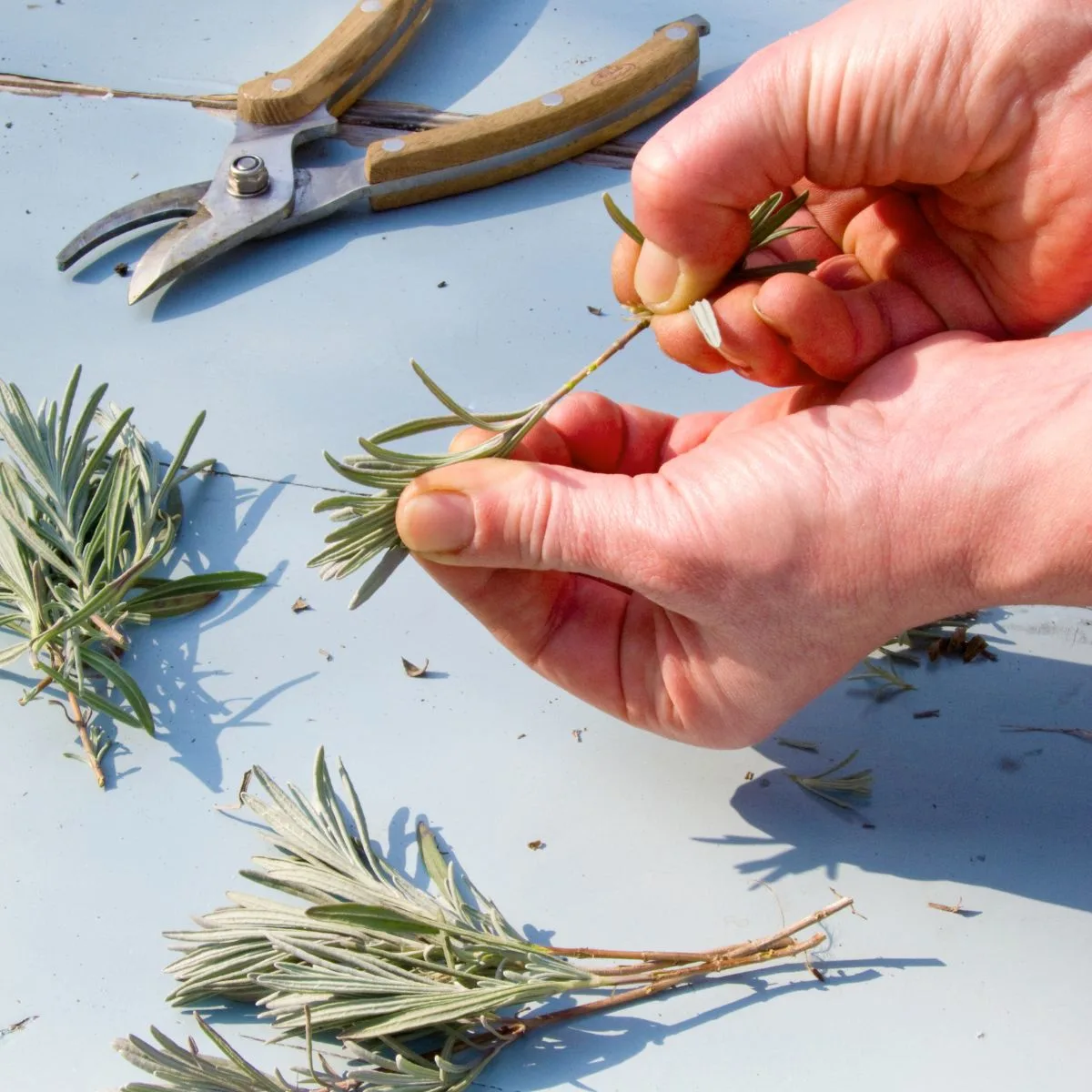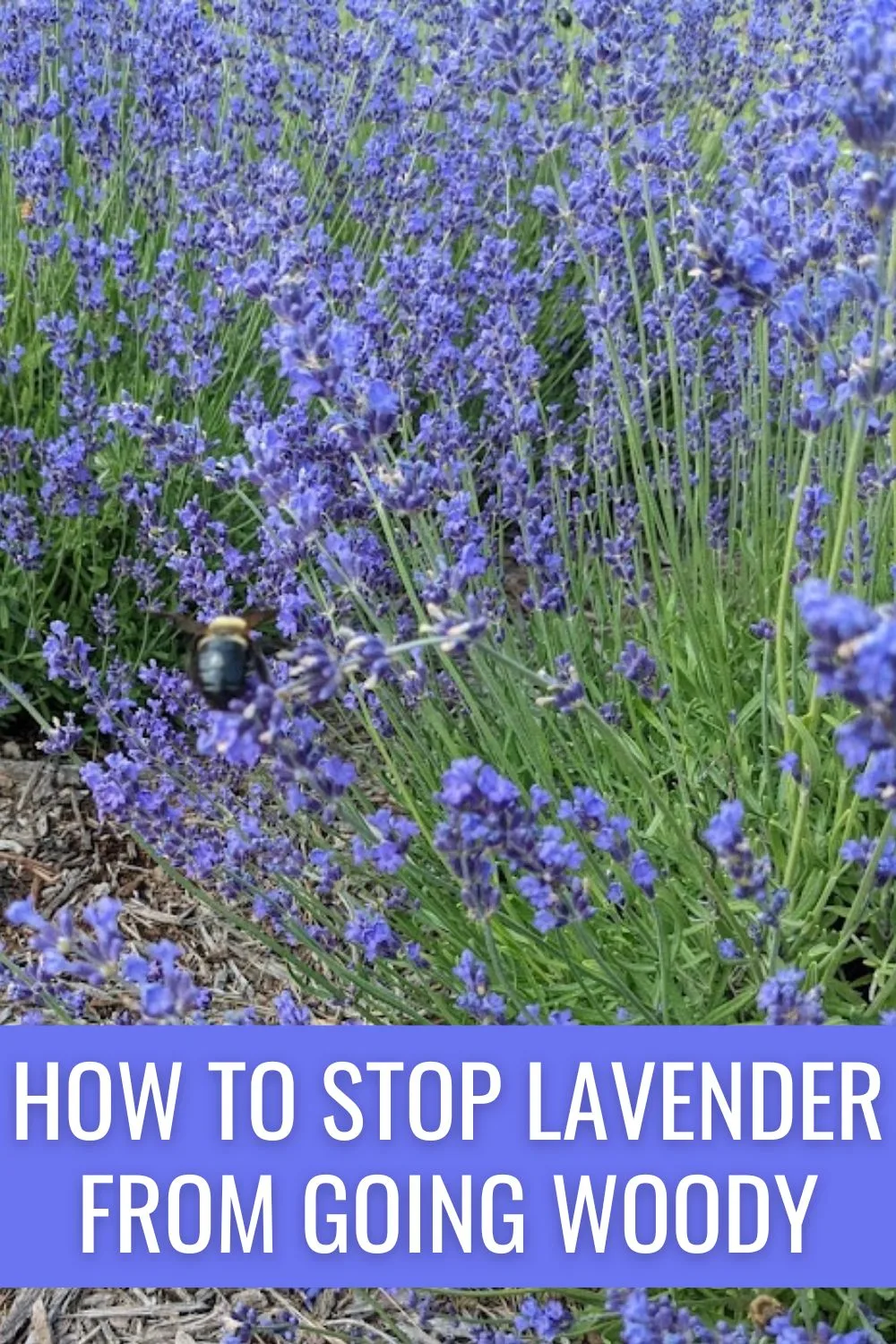Lavender plants are a great addition to the garden: they are easy to grow and last for years! But when incorrectly pruned, they can become woody, unruly, and much more challenging to care for. So, here’s how to stop lavender from going woody

Preventing lavender from becoming woody starts with an annual pruning shortly after blooming has ended. Remove growth to within one inch of last year’s growth. Cutting more than that can damage the plant. Faithfully pruning lavender plants will keep them from becoming woody and help next year’s blooms.
How to Stop Lavender from Going Woody?
If you’ve ever tried to grow lavender before, you’re probably familiar with the experience of it going woody. The flowers on your lavender plant become more sparse, and the bare wood near the bottom of the plant takes over.
It can be highly frustrating to deal with a woody lavender plant. But correct trimming is going to be your best bet when it comes to stopping your lavender plant from becoming a bare, woody mess.
Why does lavender become woody?
Becoming woody is an inevitable part of the life cycle of a lavender plant. As the lavender matures, it will gradually become more woody near the base of the plant.
While preventing it is impossible, there are ways to slow woody lavender stems down. One of the most critical actions you can take against woody lavender plants is to start pruning them young.
BTW, as you prune your plants, propagate some of them to increase the size of your lavender garden or to replace the ones you lose (which inevitably happens sometimes). Here’s how to get free lavender plants from your cuttings.
Improper soil can increase the likeliness of hardening lavender stems. Amend the soil, avoiding clay. Add sand and small rocks to the soil before planting lavender. Learn more about the best soil for lavender.
4 actions that will prevent lavender from going woody
Let’s go ahead and break down the essential steps that you’ll need to take to slow down the rate at which lavender goes woody:
Yearly pruning

Regular pruning encourages healthy growth and helps prevent the plant from becoming woody.
How to prune lavender
Cut back the stems to create a mound shape. Cut off all dead flowers and damaged stems with a clean pair of hand pruners. Just be sure you never cut right down into the wood!
When to prune
The best time of year to prune lavender is shortly after the plant has finished flowering. This will typically be during early to late summer.
Avoid pruning lavender during winter or early spring, as new growth often forms. You don’t want to undo all of the plant’s hard work!
How much to prune for best results
it’s best to prune around ⅓ of the plant, working around the outside of the plant.
Focus primarily on dead and damaged stems, moving on to forming a clean mound shape. Be careful not to prune too much or cut into the woody base of the plant.
What happens when you don’t prune lavender?
If you regularly prune your lavender, the plant will become more robust since it doesn’t need to maintain the heads of the flower and seeds.
It will also grow misshapen or ‘leggy,’ splitting at the base while the branches get longer and heavier. This will also cause the stems to be unable to support the flower heads, flopping over and drooping under the weight.
Proper trimming
Proper trimming encourages new, fresh flower growth and will help to slow the process of the plant becoming woody. So, regularly trim back dead or old flower heads and damaged stems to help the plants flourish.
Water regularly
If you have just planted your lavender, you will want to water it once or twice a week throughout its first growing season. After this, water it every two to three weeks until the flower buds have formed. As the flowers bloom, water around once a week. After the blooming season has ended, you can reduce the watering again.
Promote good airflow
To thrive, lavender plants require good airflow. Be sure you are not planting your lavender in a crowded space, pressed against other plants. Instead, plant lavender in a location with good airflow to keep it healthy and reduce the risk of fungal disease.
I planted a lavender field (you could call it a small lavender farm) in front of my house that includes many varieties: culinary lavender, lavender with pink flowers, and highly fragrant lavender types, such as Provence and True Grosso. I share what I learned in the process in this book. Take a peek before planting your next lavender plants, and learn from my mistakes.
What to do with woody lavender plants
If your lavender plant has already gone woody and it seems too late to save it, don’t worry! There are still ways that you can use it:
Use for cuttings

A woody lavender plant can always be used or cuttings! You can snip off some good sections of the plant and use it for decoration or as an ingredient in recipes. If you want to grow more lavender, cuttings can also be useful.
Cut off sections of the lavender with a few inches of the woody stem attached and scrape back the wood at the base to expose the green inside.
Then, spray them with rooting hormone and plant them in damp sand. Keep in a sunny spot with good airflow; you may have a new lavender plant growing before you know it!
Rejuvenate it by carefully trimming the dead portions
If you can see a bit of new growth at the base of your lavender and are determined to save your woody plant, there is a three-year rejuvenation method that you can follow.
Completely prune back ⅓ of the dead and woody sections each year, as close to the base as possible, until they have all been removed.
This is a tricky process, but it can often lead to only the fresh and healthy parts of your lavender plant remaining.
With any luck, these sections will spread and grow stronger, leaving you with a luscious lavender plant once more.
How to revive woody lavender
All is not lost, depending on how old your lavender is and how many woody portions you have. In some cases, pruning woody lavender can help revive the plant. If you see some green growth in the woody sections, you can carefully prune the dead wood to encourage the new shoots to grow. This will often restore the plant and give it a second chance.
This video shows how to trim dead wood and help your lavender plant grow back stronger.
Landscaping with lavender flowers invites bees and butterflies to your garden. And since lavender is a drought-tolerant perennial, it’s perfect for rock gardens in full sun. But a woody lavender plant can be endlessly frustrating, unsightly, and downright devastating. If you want to keep your plants happy, regular pruning and trimming, good soil maintenance, and optimal growing conditions will help your lavender plant flourish.
Love Lavender? Learn More From These Guides
- how to plant lavender
- lavender flower colors
- how to store dried lavender
- French lavender care
- Spanish lavender care
- how to revive a dying lavender plant

Adriana Copaceanu is a passionate nature lover living in the country on her dream property where she grows vegetables, lavender, and wildflowers that she shares with the wildlife they attract. When she's not in the garden, she loves spending time with her chickens and planning her next nature project. Check out her books below:
How to Grow Lavender for Fun and Profit: Lessons Learned from Planting Three Hundred Lavender Plants
